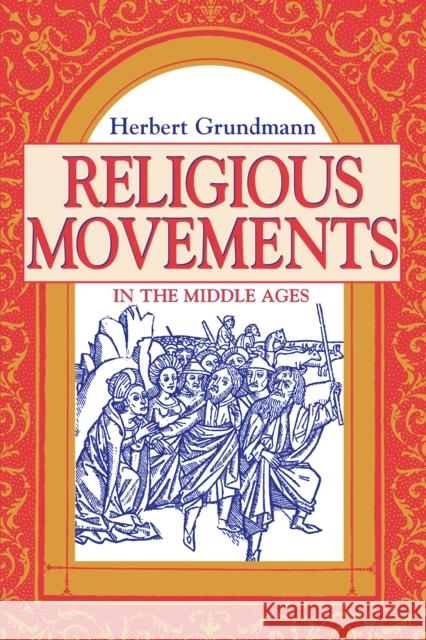Religious Movements in the Middle Ages » książka
Religious Movements in the Middle Ages
ISBN-13: 9780268016494 / Angielski / Twarda / 1996 / 476 str.
Medievalists, historians, and women's studies specialists will welcome this translation of Herbert Grundmann's classic study of religious movements in the Middle Ages because it provides a much-needed history of medieval religious life--one that lies between the extremes of doctrinal classification and materialistic analysis--and because it represents the first major effort to underline the importance of women in the development of the language and practice of religion in the Middle Ages.
Religious Movements in the Middle Ages describes a lay religious movement of the eleventh and twelfth centuries that emphasized the centrality of lifestyle rather than doctrine. The religious groups that developed and solidified out of this movement were considered heterodox by some standards, orthodox by others. However, despite initial condemnation, these groups, among them any women's groups, were given permissive rules to suit their peculiarities. Grundmann explicates the doctrines that lay behind these religious movements and captures the material contexts that fostered them. Most importantly, he is able to recapture the dynamism of the groups themselves and to identify the historically contingent events that carried them along their various paths. Perhaps the greatest synthetic daring of Grundmann's study is his emphasis on the common point of departure shared by the religious groups that were ultimately to become located on either side of orthodoxy as defined by the pope. Prior to Grundmann's study, scholars had only discussed either high medieval heresy or new orders within the Church, but never, as Grundmann does here, the common inspiration that lay behind both. Thus, this enduring study has become the foundation for the historical study of medieval religious life, and scholars agree that it remains as challenging and exciting s it was when originally published in 1935.Medievalists, historians, and womens studies specialists will welcome this translation of Herbert Grundmanns classic study of religious movements in the Middle Ages because it provides a much-needed history of medieval religious life--one that lies between the extremes of doctrinal classification and materialistic analysis--and because it represents the first major effort to underline the importance of women in the development of the language and practice of religion in the Middle Ages.











